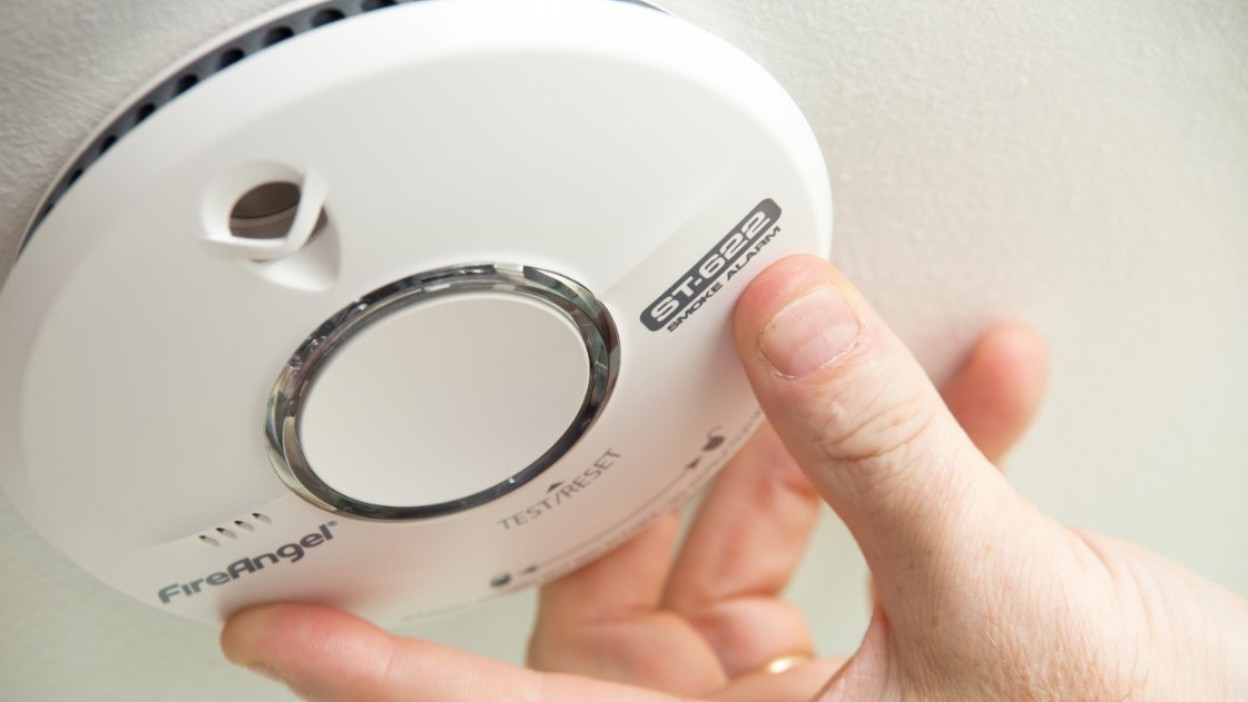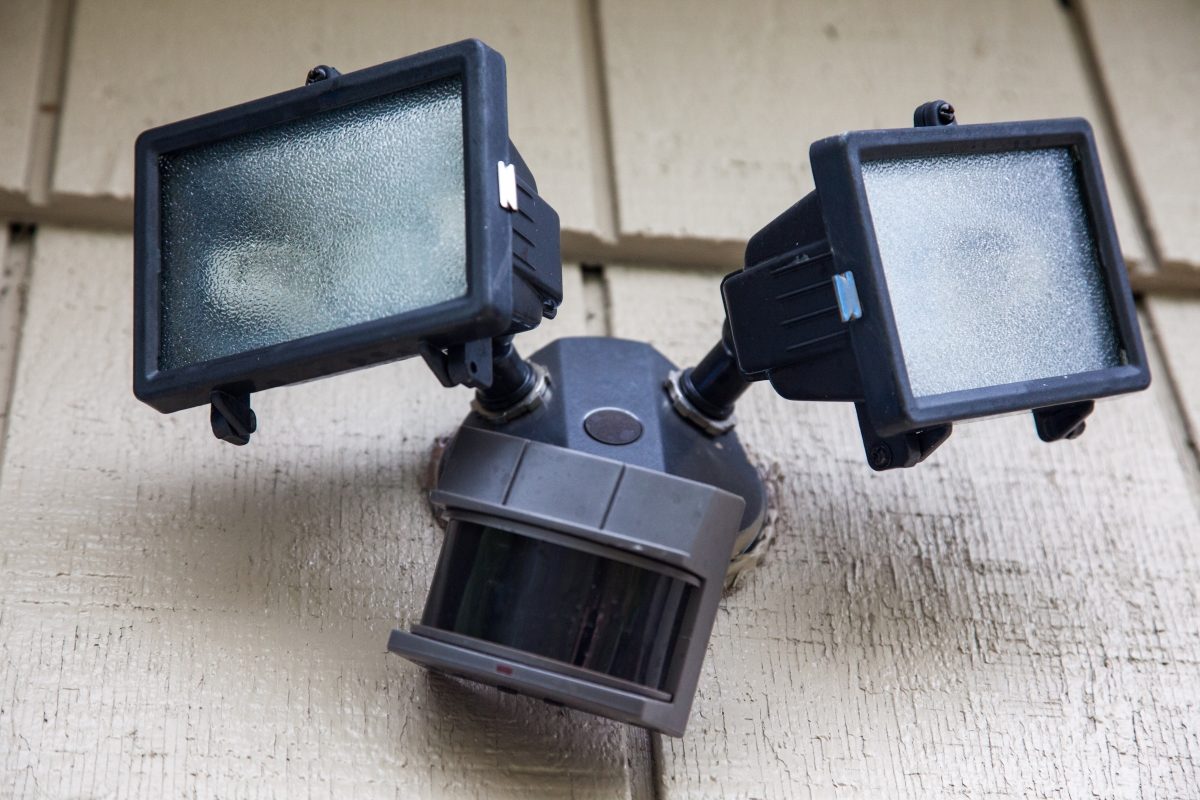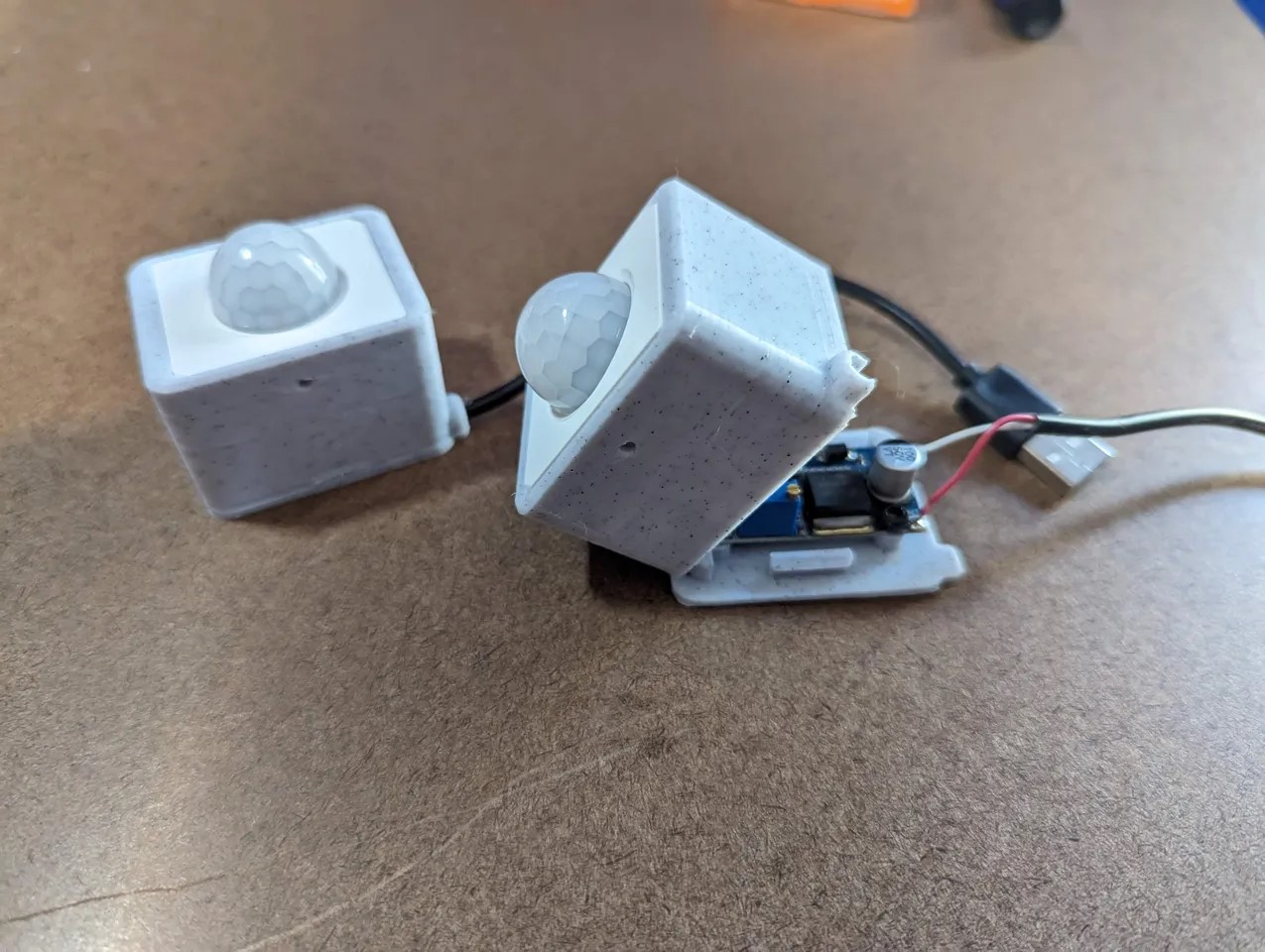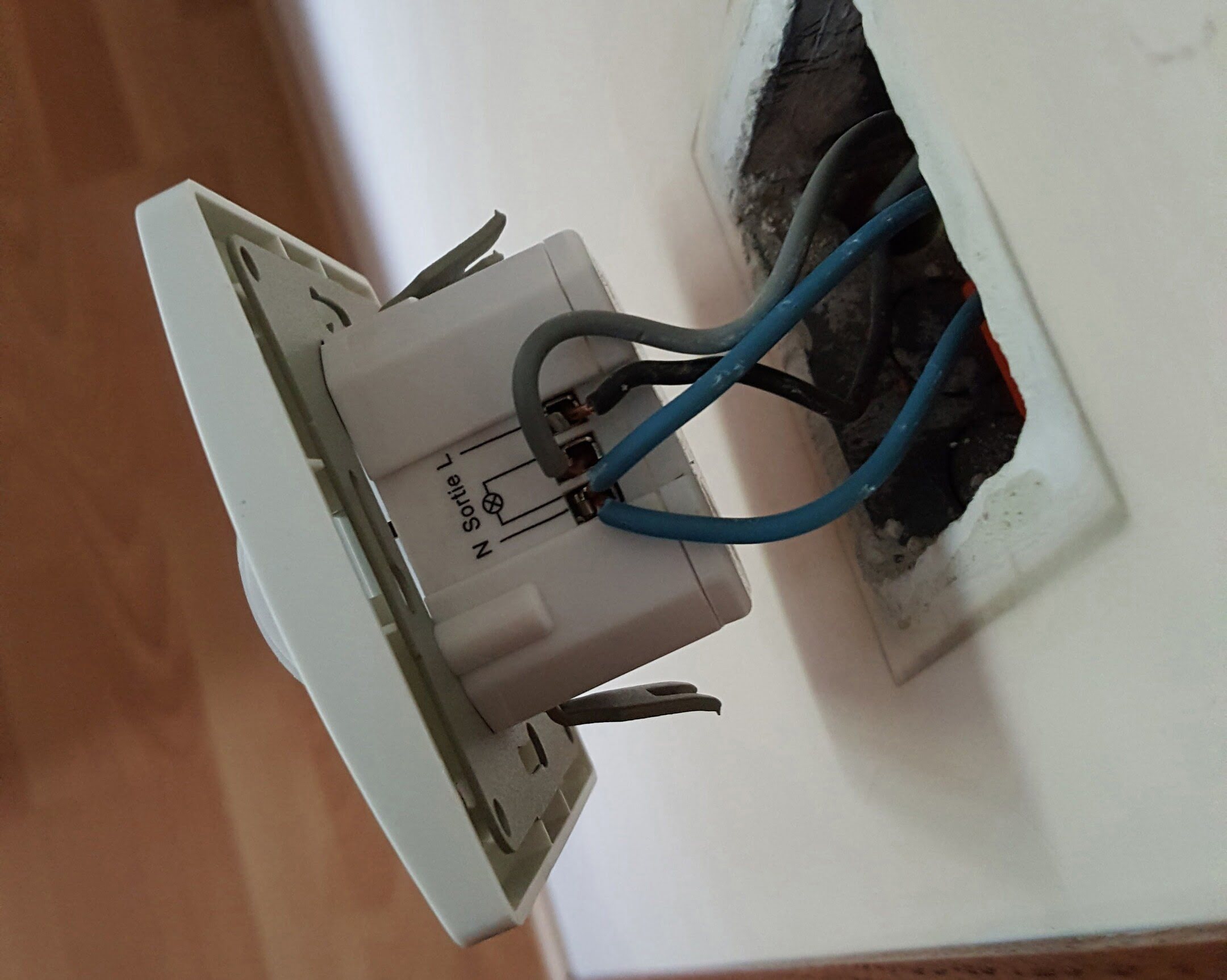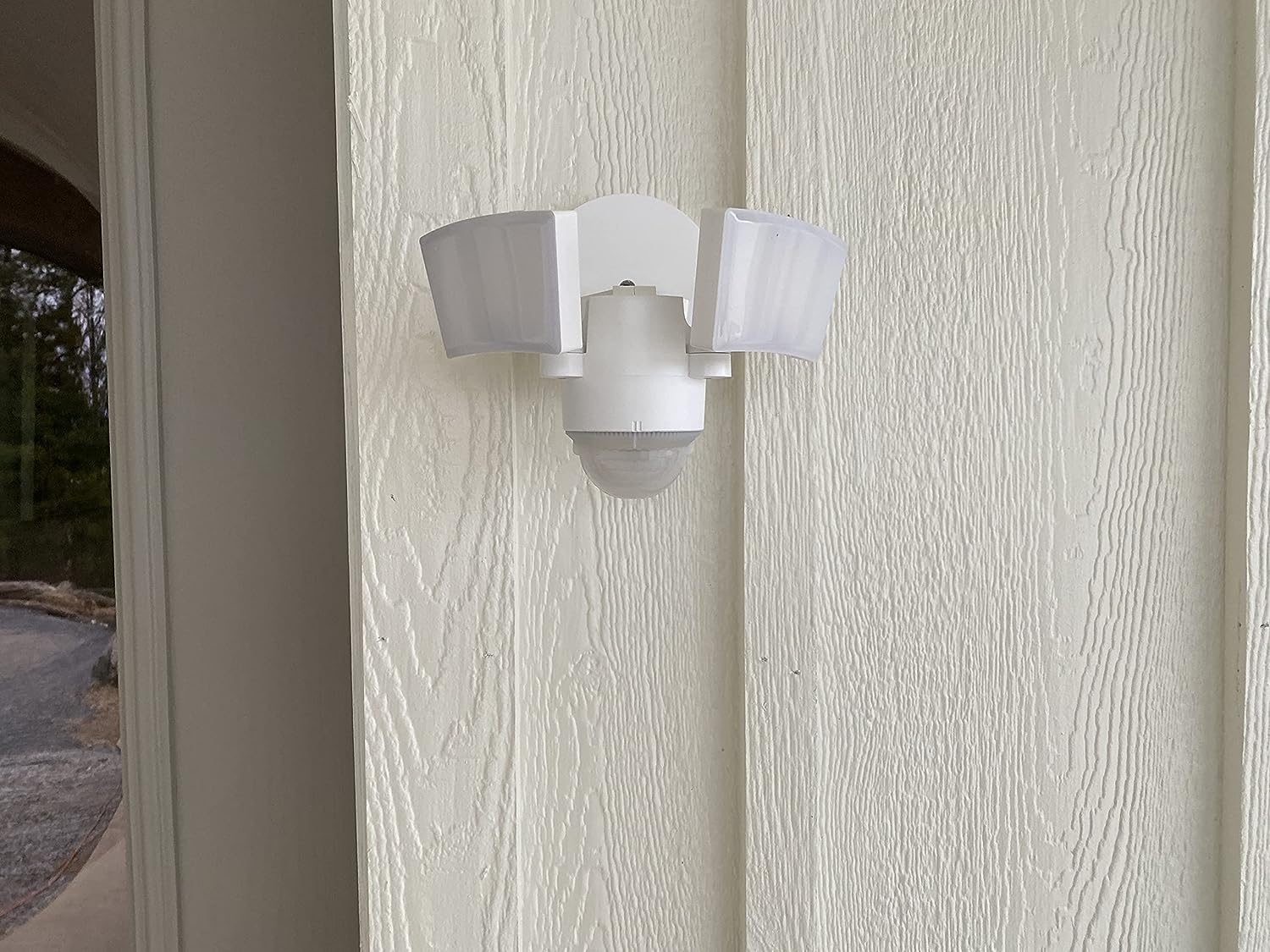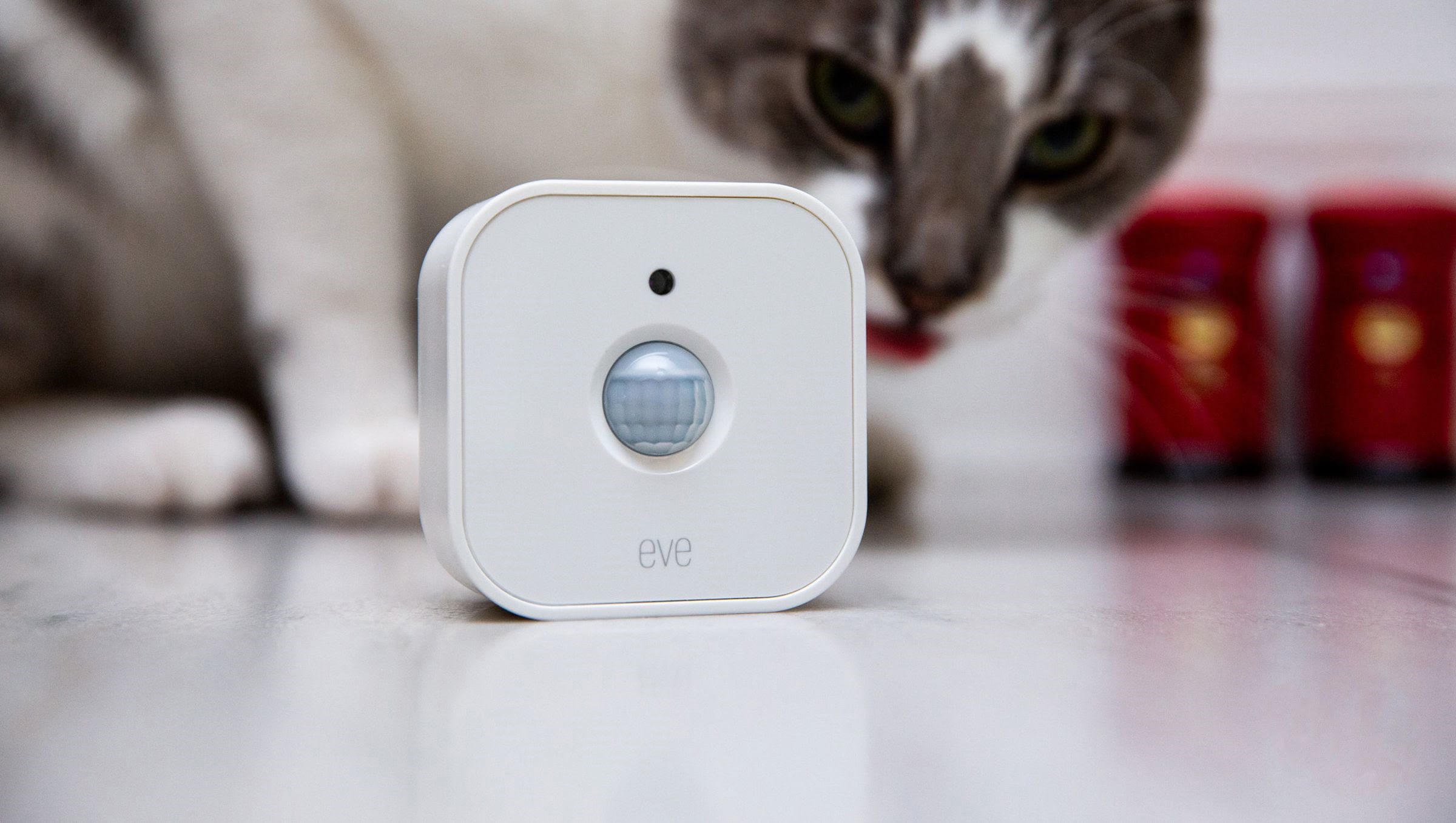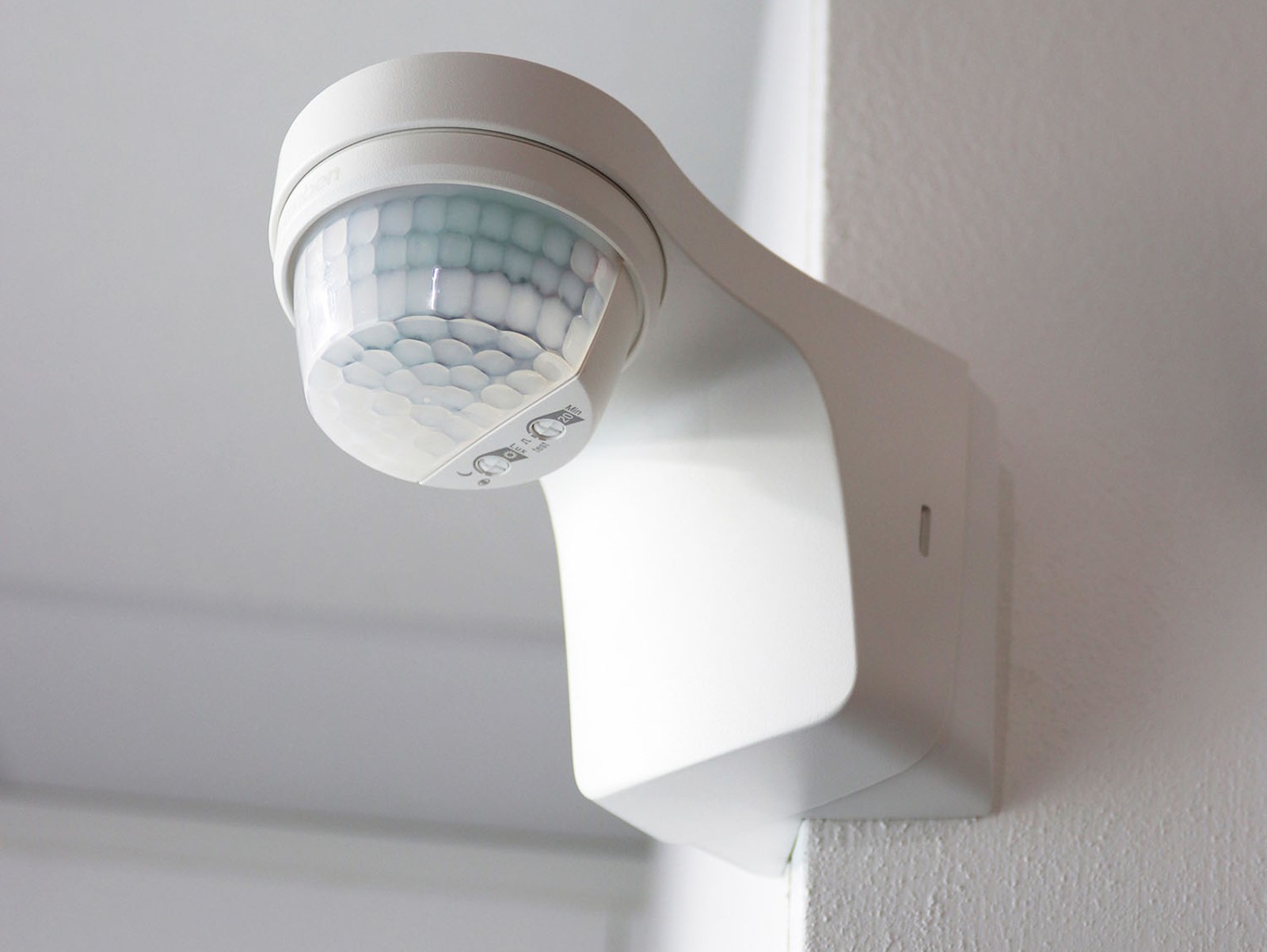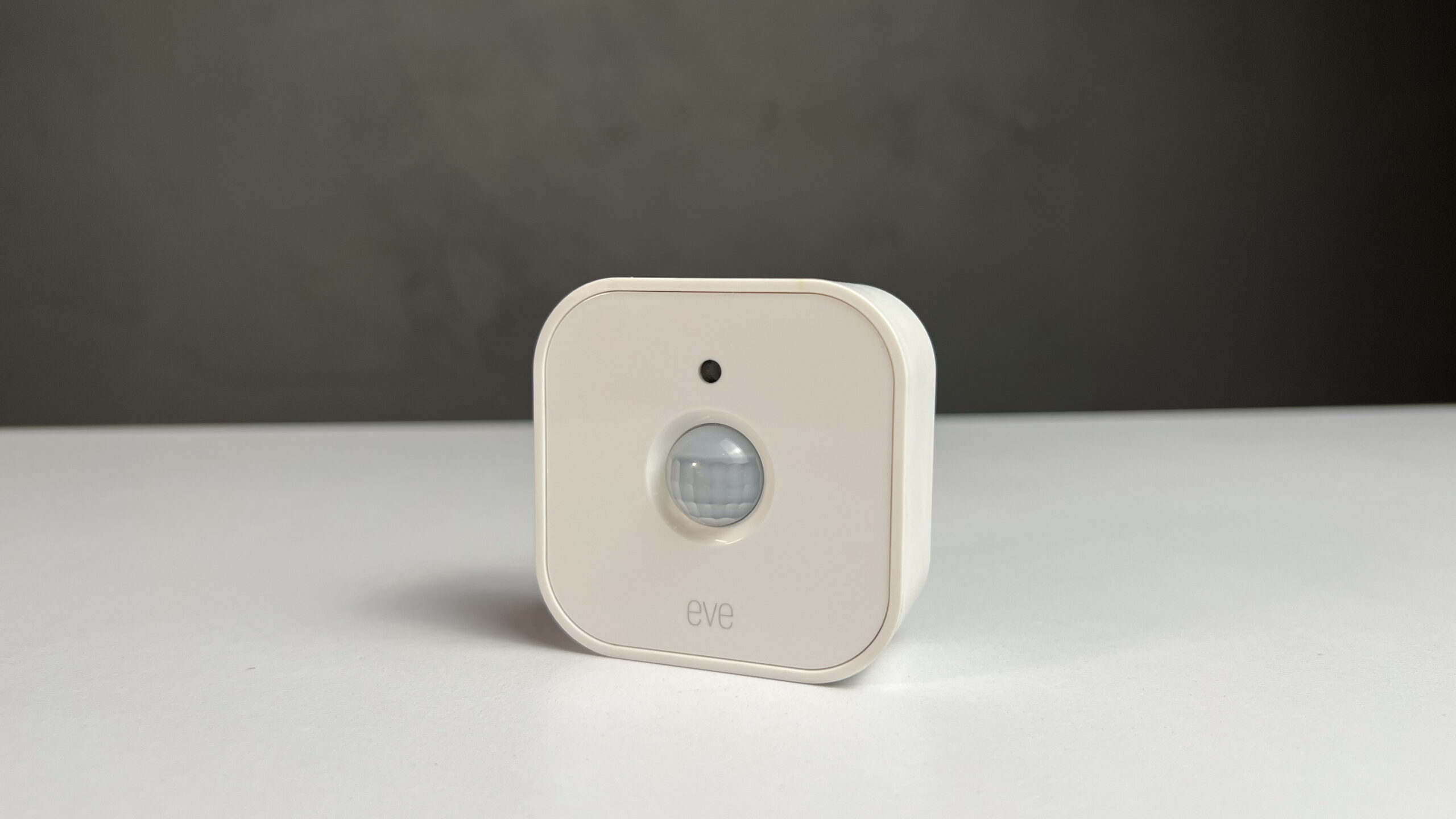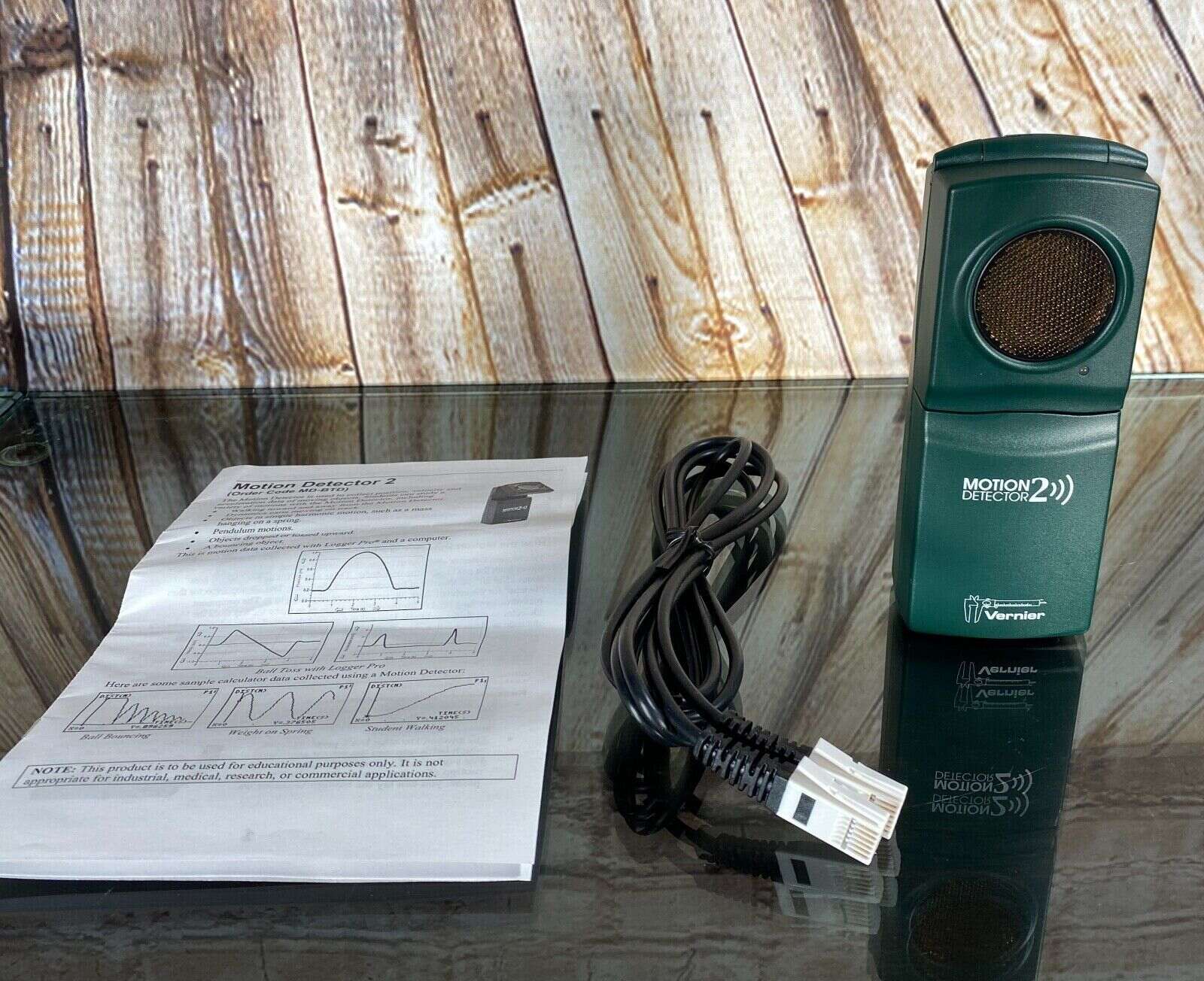Home>Home Security and Surveillance>How To Decrease Sensitivity On Motion Detector Settings


Home Security and Surveillance
How To Decrease Sensitivity On Motion Detector Settings
Modified: March 6, 2024
Learn how to decrease sensitivity on motion detector settings for optimal home security and surveillance. Enhance your system's accuracy and minimize false alarms.
(Many of the links in this article redirect to a specific reviewed product. Your purchase of these products through affiliate links helps to generate commission for Storables.com, at no extra cost. Learn more)
Introduction
Home security and surveillance systems play a crucial role in safeguarding our homes and providing peace of mind. Among the essential components of these systems are motion detectors, which are designed to detect any movement within their range and trigger an alarm or camera recording. However, one common challenge many homeowners face is dealing with false alarms triggered by overly sensitive motion detectors.
Reducing the sensitivity of motion detector settings is an important step in preventing false alarms while ensuring that genuine security threats are detected. In this article, we will explore the factors affecting motion detector sensitivity and provide expert tips on how to decrease it effectively.
By understanding and adjusting the sensitivity levels of motion detectors, homeowners can achieve optimal security performance and minimize the inconvenience of false alarms. Let’s delve deeper into this topic to gain a better understanding of how to decrease sensitivity on motion detector settings.
Key Takeaways:
- Adjusting motion detector sensitivity and range, and optimizing placement can minimize false alarms and ensure accurate detection for a reliable home security system.
- Factors like environmental conditions, interference, and moving objects impact motion detector sensitivity. Understanding and adjusting these factors is crucial for effective false alarm prevention.
Understanding Motion Detector Sensitivity
Motion detector sensitivity refers to the level at which the detector will respond to movement or changes in the environment. Higher sensitivity means that even the slightest movement or change can trigger an alarm, while lower sensitivity requires more significant movement to activate the detector. It’s crucial to strike the right balance in sensitivity settings to ensure accurate detection and minimize false alarms.
Most motion detectors use a combination of technologies, such as passive infrared (PIR) and microwave, to detect motion. PIR sensors work by detecting changes in heat patterns within their range, while microwave sensors emit and receive microwave signals to detect movement. These technologies can be adjusted independently or in combination to determine the sensitivity levels of the motion detector.
It’s essential to note that motion detector sensitivity can vary depending on different factors, such as the environment, placement, and specific model of the detector. Therefore, understanding these factors is crucial for effectively decreasing sensitivity and optimizing the detector’s performance.
Factors Affecting Motion Detector Sensitivity
1. Environmental Conditions: Harsh weather conditions like heavy rain, extreme temperatures, or strong winds can impact motion detector sensitivity. Additionally, the presence of objects that emit heat, such as appliances and heating vents, can interfere with the accuracy of PIR sensors.
2. Placement: Proper placement of motion detectors is critical for ensuring optimal performance. Placing them too high or too low, facing towards reflective surfaces, or in areas with a lot of obstructions can affect their sensitivity levels. Adjusting the angle and positioning of the motion detector can help improve accuracy.
3. Interference: Other electronic devices in the vicinity, such as Wi-Fi routers, cordless phones, or Bluetooth devices, can cause interference and impact motion detector sensitivity. Ensuring that the detector is placed away from such devices can help reduce false alarms caused by interference.
Factors Affecting Motion Detector Sensitivity
Several factors can affect the sensitivity of motion detectors, which determine how effectively they detect motion and respond to it. Understanding these factors is crucial for adjusting and decreasing the sensitivity to optimize the overall performance of your home security system. Let’s explore the key factors that can impact motion detector sensitivity:
- Environmental Conditions: The environment where your motion detectors are installed can influence their sensitivity. Extreme weather conditions like heavy rain, snow, or strong winds can trigger false alarms if the detectors are not properly calibrated. Similarly, rapid changes in temperature or humidity levels can also impact their performance. It’s important to consider these environmental factors and adjust the sensitivity accordingly to minimize false alarms.
- Placement: The placement of the motion detectors plays a vital role in their sensitivity. Incorrect positioning can lead to inaccurate readings and false alarms. Avoid placing detectors near heat sources, direct sunlight, or other objects that emit heat, as this can interfere with the accuracy of the sensors. Additionally, make sure the detectors are mounted at an appropriate height and angle to cover the desired area effectively.
- Size and Range of Detection: Different motion detectors have varying ranges and fields of view. The size of the area being monitored and the distance at which you want the sensor to detect motion can affect its sensitivity. Adjust the detection range based on the specific needs of your space. For example, if you have a small room, reducing the range can help minimize false alarms triggered by movement in adjacent areas.
- Interference: Interference from other electronic devices can impact motion detector sensitivity. Wi-Fi routers, cordless phones, or other wireless devices operating on similar frequencies as the detectors can cause false alarms. Keep the detectors away from these devices or adjust their sensitivity to mitigate interference.
- Moving Objects within Range: Motion detectors are designed to detect movement within their range, but certain moving objects may trigger false alarms. Common culprits include small pets, swaying tree branches, or curtains blowing in the wind. If these objects frequently trigger false alarms, consider adjusting the sensitivity to decrease the likelihood of detection.
By taking these factors into consideration and making necessary adjustments, you can effectively decrease the sensitivity of your motion detectors and reduce the occurrence of false alarms. Proper calibration and placement are key to maximizing the accuracy of your home security system while minimizing any unnecessary disruptions.
Tips for Decreasing Sensitivity on Motion Detector Settings
Dealing with false alarms triggered by overly sensitive motion detectors can be frustrating. Fortunately, there are several expert tips that can help you effectively decrease the sensitivity of your motion detector settings. By following these tips, you can optimize the performance of your home security system and minimize false alarms. Let’s explore some of the best practices:
- Read the Manual: Start by thoroughly reading the user manual that came with your motion detector. Each model may have specific instructions and recommendations for adjusting sensitivity settings. Familiarize yourself with the manufacturer’s guidelines before making any changes.
- Adjust Sensitivity Levels: Most motion detectors have adjustable sensitivity levels, allowing you to find the right balance between accurate detection and false alarms. Experiment with different settings to determine the optimal sensitivity for your specific needs.
- Reduce Detection Range: If your motion detector covers a larger area than necessary, decreasing the detection range can help reduce false alarms triggered by movement outside of the desired monitored area. Adjust the range to focus on the specific areas that require surveillance.
- Position the Detector Correctly: Improper positioning can lead to false alarms or missed detections. Make sure your motion detector is mounted at the right height and angle to cover the desired area effectively. Avoid pointing it directly at reflective surfaces, windows, or heat-producing objects that can interfere with its accuracy.
- Consider Dual Technology Detectors: Dual technology motion detectors combine multiple technologies, such as PIR and microwave, to improve accuracy and reduce false alarms. These detectors analyze both heat patterns and movement, making them less prone to triggering false alarms caused by environmental factors.
- Use Pet-Immune Detectors: If you have pets at home, consider investing in motion detectors with pet-immune features. These detectors are designed to ignore movements from small animals, such as cats or dogs, reducing false alarms caused by pet activity.
- Regular Maintenance: Keep your motion detectors clean and free from dust or debris that may interfere with their performance. Regularly check for any obstructions, such as tree branches or curtains, and make sure they are not obstructing the detector’s field of view.
- Test and Fine-tune: After making any adjustments to the sensitivity settings, test the motion detectors thoroughly to ensure they are working accurately. Fine-tune the sensitivity if necessary to achieve the desired balance between detection and false alarm prevention.
- Consult with a Professional: If you are unsure about adjusting the sensitivity of your motion detector settings or if you continue to experience false alarms, consider consulting with a professional home security expert. They can provide guidance and help you optimize the settings for your specific needs.
By following these tips and implementing the recommended adjustments, you can effectively decrease the sensitivity of your motion detector settings while maintaining a reliable and accurate home security system.
To decrease sensitivity on a motion detector, try adjusting the sensor’s range and angle to reduce false alarms. You can also consider adding barriers or shields to block certain areas.
Adjusting Motion Detector Range
One of the key factors that affect the sensitivity of motion detectors is the range within which they detect motion. The range refers to the distance at which the detector can accurately detect movement. Adjusting the range can help decrease sensitivity and prevent false alarms caused by unnecessary detection. Here are some tips for properly adjusting the motion detector range:
- Understand Your Monitoring Needs: Determine the specific areas that require surveillance and consider the distance at which you want the detector to detect motion. This will help you set a suitable range for your motion detector.
- Access the Settings: Refer to the user manual or instructions provided with your motion detector to access the sensitivity settings. Different models may have varying methods for adjusting the range.
- Test Different Range Settings: Start by testing the motion detector at its maximum range setting to see if it triggers false alarms due to unnecessary detection. Gradually decrease the range setting and test the detector again to find the optimal range that meets your monitoring needs without compromising accuracy.
- Avoid Overlapping Coverage: If you have multiple motion detectors in your home security setup, make sure to adjust the range settings in a way that the coverage areas do not overlap excessively. Overlapping coverage can cause cross-triggering and increase the chances of false alarms.
- Consider the Layout of the Monitored Area: Take into account the layout of the area you want to monitor. Determine if there are any obstacles or obstructions that may interfere with the detection. Adjust the range to exclude areas where false alarms may be likely to occur, such as areas near windows, heat vents, or foliage that may sway in the wind.
- Regularly Test and Fine-tune: Once you have adjusted the range settings, make sure to thoroughly test the motion detector to ensure it is accurately detecting motion within the desired range. If needed, make further adjustments to fine-tune the range setting.
- Consider Dual Technology Detectors: Dual technology motion detectors use a combination of technologies, such as PIR and microwave, to improve accuracy and reduce false alarms. These detectors can be particularly useful in adjusting the range, as they can provide more reliable motion detection at greater distances.
- Consult with a Professional: If you are uncertain about adjusting the range settings of your motion detector or if you continue to experience false alarms, it may be beneficial to consult with a professional home security technician. They can provide expert guidance and help you optimize the range setting for your specific needs.
By adjusting the motion detector range appropriately, you can decrease the sensitivity and minimize false alarms, while ensuring effective monitoring and security in your home.
Optimizing Motion Detector Placement
The placement of motion detectors is crucial to their performance and accuracy. Proper placement ensures that they effectively detect and capture any movement within their range while minimizing false alarms. Here are some tips for optimizing the placement of motion detectors:
- Strategic Coverage: Determine the areas that require monitoring and identify the most strategic locations for installing motion detectors. Common areas include entrances, hallways, staircases, and rooms with valuable assets. Place the detectors in positions where they can provide maximum coverage of these critical areas.
- Height and Angle: Mount the motion detectors at an appropriate height and angle. Ideally, they should be installed at a height of 6-8 feet from the floor. This placement allows for optimal coverage of the desired area and reduces the risk of triggering false alarms due to movement on the ground level.
- Avoid Obstructions: Ensure that there are no obstructions blocking the field of view of the motion detectors. Objects such as furniture, curtains, plants, or decorations can interfere with their accuracy and cause false alarms. Keep the area around the detectors clear to ensure unobstructed detection.
- Angle Adjustment: Most motion detectors allow for angle adjustment to fine-tune their detection range. Experiment with different angles and test the detection capabilities to ensure optimal coverage and accuracy. Avoid pointing the detectors towards reflective surfaces, glass windows, or other potential sources of interference.
- Consider Multiple Detectors: If you have a large space or areas with many obstacles, consider using multiple motion detectors strategically placed to provide comprehensive coverage. This helps minimize blind spots and increases the accuracy of motion detection.
- Avoid High Heat Sources: Heat sources, such as heating vents, fireplaces, or direct sunlight, can trigger false alarms by interfering with the heat-based detection mechanism of motion detectors. Avoid placing the detectors in close proximity to these sources to prevent false alarms caused by temperature fluctuations.
- Keep Electronics Away: Electronic devices emitting electromagnetic signals, such as Wi-Fi routers, cordless phones, or baby monitors, can interfere with motion detector performance. Keep the detectors away from such devices to avoid false alarms due to signal interference.
- Regular Testing: Once you have installed the motion detectors, regularly test their performance to ensure accurate detection. Walk through the monitored areas and confirm that the detectors detect your movement consistently. Make adjustments as needed to optimize their placement and sensitivity settings.
- Consult with a Professional: If you are unsure about the optimal placement of motion detectors or need assistance in optimizing their positioning, consider consulting with a professional security technician. They can provide expert advice tailored to your specific security needs and help you achieve the best results.
By following these guidelines and optimizing the placement of motion detectors, you can maximize their effectiveness and ensure reliable motion detection for enhanced home security.
Eliminating False Alarms
False alarms from motion detectors can be a nuisance and may lead to a decreased level of trust in your home security system. Fortunately, there are several measures you can take to minimize false alarms and ensure accurate detection. Here are some effective strategies for eliminating false alarms:
- Adjust Sensitivity Settings: Fine-tune the sensitivity settings of your motion detectors to find the right balance between accurate detection and reducing false alarms. Experiment with different sensitivity levels, considering the specific environment and the movements that need to be detected.
- Use Pet-Immune Detectors: If you have pets in your household, invest in motion detectors with pet-immune features. These detectors are designed to ignore the movement of small animals, minimizing false alarms caused by pets while still detecting potential intruders.
- Consider Dual Technology Detectors: Dual technology motion detectors, which combine infrared and microwave technologies, can offer enhanced reliability and reduce false alarms. The combination of these technologies helps to decrease false alarms triggered by environmental factors such as moving foliage or changes in temperature.
- Regular Maintenance: Keep your motion detectors clean and free from dust or debris, as obstructions can impact their accuracy. Regularly inspect the detectors for any physical damage or signs of wear and tear, and replace or repair them as needed.
- Contact Avoidance: Motion detectors can sometimes be triggered by objects or individuals coming into close proximity. To minimize this, make sure the detectors are positioned in a way that minimizes contact with people passing by, such as ensuring they are not installed too close to doorways or frequently trafficked areas.
- Eliminate Interference: Interference from other electronic devices, such as Wi-Fi routers or cordless phones, can cause false alarms. Keep the motion detectors away from these devices or use shielding or frequency adjustments to minimize signal interference.
- Consider Video Verification: Integrating video surveillance cameras with motion detectors can provide visual confirmation of detected movement. This allows you to quickly determine if the alarm is genuine or a false alarm, reducing unnecessary responses to false alarms.
- Regularly Test the System: Periodically test your motion detectors to ensure they are functioning correctly. Walk through the monitored areas to verify that the detectors are detecting movement consistently. Additionally, check with your home security provider for any firmware updates or software enhancements that can help reduce false alarms.
- Consult with Professionals: If you have exhausted all options and continue to experience persistent false alarms, consider consulting with a professional home security expert. They can assess your specific setup, provide recommendations, and help you eliminate false alarms.
By implementing these strategies and customizing your motion detector setup, you can significantly reduce false alarms and improve the overall reliability of your home security system.
Conclusion
Decreasing the sensitivity of motion detector settings is key to minimizing false alarms while ensuring accurate detection of real security threats. By understanding the factors that affect sensitivity, adjusting the range, optimizing placement, and adopting effective strategies, homeowners can enhance the performance of their home security systems.
Understanding motion detector sensitivity allows homeowners to fine-tune the settings to achieve the optimal balance between accurate detection and false alarm prevention. Factors such as environmental conditions, placement, interference, and moving objects within range can impact sensitivity levels. By considering these variables, homeowners can make informed adjustments to decrease sensitivity as needed.
Proper placement of motion detectors plays a crucial role in their performance. By strategically positioning the detectors, considering height, angle, and avoiding obstructions, homeowners can maximize coverage and minimize false alarms. Additionally, adjusting the range of motion detectors allows for focused monitoring of specific areas and reduces the risk of unnecessary detection.
To eliminate false alarms, homeowners can also employ pet-immune detectors, consider dual technology detectors, perform regular maintenance, minimize contact with detectors, eliminate interference, and utilize video verification. Regular testing and professional consultation can further enhance the effectiveness of motion detection systems.
In conclusion, decreasing sensitivity on motion detector settings requires a holistic approach that encompasses understanding sensitivity factors, adjusting range, optimizing placement, and implementing effective strategies. By following these guidelines, homeowners can enjoy the benefits of a reliable home security system that provides accurate detection of potential threats while minimizing false alarms.
Frequently Asked Questions about How To Decrease Sensitivity On Motion Detector Settings
Was this page helpful?
At Storables.com, we guarantee accurate and reliable information. Our content, validated by Expert Board Contributors, is crafted following stringent Editorial Policies. We're committed to providing you with well-researched, expert-backed insights for all your informational needs.
